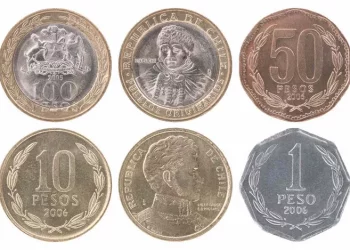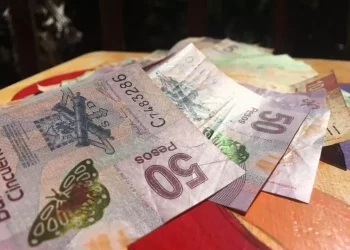In today’s interconnected global economy, currency exchange rates play a vital role in international trade, investment, and personal financial transactions. When individuals or businesses in Mexico wish to convert Mexican pesos (MXN) into US dollars (USD), they need to understand not only the current exchange rate but also the factors influencing the value of these two currencies. The foreign exchange (Forex) market is where these exchanges happen, with traders using various strategies to capitalize on changes in exchange rates. In this article, we will explore how much 55,000 MXN is in USD, discuss the factors that influence this conversion, and examine the different strategies traders employ to navigate the Forex market.
Understanding the Exchange Rate: How Much is 55,000 MXN to USD?
The first and most important factor when considering currency conversion is the exchange rate. The exchange rate tells you how much of one currency you can exchange for another. In this case, we’re interested in the exchange rate between Mexican pesos (MXN) and US dollars (USD).
As of the latest data, the exchange rate between the Mexican peso (MXN) and the US dollar (USD) can fluctuate throughout the day based on a range of economic, political, and market factors. Therefore, the answer to the question “How much is 55,000 MXN to USD?” will depend on the current exchange rate at the time of conversion.
Current Exchange Rate (Approximation):
For the sake of clarity, let’s assume that the exchange rate is 1 USD = 18.00 MXN. This rate fluctuates frequently, but for this example, we can calculate as follows:
55,000 MXN÷18.00=3,055.56 USD
So, at an exchange rate of 18.00 MXN to 1 USD, 55,000 MXN is equivalent to approximately 3,055.56 USD.
However, this is a rough estimate. The actual amount may vary depending on the real-time exchange rate, which changes due to market conditions. Let’s now explore some key factors that influence the exchange rate between MXN and USD.
Factors Influencing the MXN/USD Exchange Rate
The exchange rate between two currencies is never static. It is subject to fluctuations based on various factors, including:
Economic Indicators
Economic data plays a major role in influencing currency exchange rates. When a country’s economy is strong, its currency tends to appreciate against other currencies. In contrast, economic instability can lead to a devaluation of the currency. Key economic indicators that influence the MXN/USD exchange rate include:
- Gross Domestic Product (GDP): A growing GDP is often seen as a sign of economic strength, leading to an appreciation of the national currency.
- Inflation Rate: Lower inflation rates generally support a stronger currency, as it reflects the stability of the country’s economy.
- Interest Rates: Central banks, such as Mexico’s Bank of Mexico (Banxico) and the US Federal Reserve, adjust interest rates to control inflation and stimulate or slow economic growth. A higher interest rate typically leads to currency appreciation.
Geopolitical Events
Geopolitical events can have a profound effect on currency exchange rates. Political instability, government policies, and international relations can lead to fluctuations in currency values. For instance, major trade agreements or diplomatic tensions between Mexico and the United States can directly impact the MXN/USD exchange rate.
Commodity Prices
Mexico is a significant exporter of oil, and the price of crude oil can significantly affect the value of the Mexican peso. When oil prices rise, Mexico’s export revenues increase, which can strengthen the peso against the US dollar. Conversely, falling oil prices can weaken the peso.
Market Sentiment and Speculation
Forex traders often react to news and market sentiment, which can create short-term volatility in the market. If traders believe that the Mexican economy will strengthen in the near future, they may buy more pesos, driving up the value of the MXN against the USD. Similarly, if there are concerns about the economic outlook in Mexico or the US, it can lead to shifts in the exchange rate.
Central Bank Policies
The monetary policies of central banks play a crucial role in the stability and value of a currency. For example, the Federal Reserve in the United States and Banxico in Mexico influence exchange rates through their interest rate decisions and other economic policies. When a central bank raises interest rates, it can lead to an appreciation of the currency as investors seek higher returns.
How Forex Traders Calculate Currency Conversion
In the Forex market, currency pairs are quoted in terms of one currency against another. In the case of MXN/USD, the exchange rate shows how many Mexican pesos are needed to purchase one US dollar. Forex traders use these exchange rates to make profits by speculating on the future movements of currencies.
To understand how traders calculate conversions, it’s important to understand the concept of a currency pair. A currency pair consists of two currencies: the base currency (the first currency in the pair) and the quote currency (the second currency). In the MXN/USD pair, MXN is the base currency, and USD is the quote currency.
When trading, the goal is to predict whether the base currency will appreciate or depreciate relative to the quote currency. If traders believe the MXN will strengthen against the USD, they will buy the MXN and sell the USD. Conversely, if they believe the MXN will weaken, they will sell the MXN and buy the USD.
Different Methods of Converting MXN to USD
There are multiple ways to convert MXN to USD, depending on your specific needs. These methods include:
Bank or Currency Exchange Services
For individuals who need to exchange currency for personal use, the most common method is through banks or currency exchange services. The exchange rates offered by these institutions are usually marked up to cover transaction fees. Banks typically provide the most secure and reliable service, but they may not always offer the best exchange rates.
Online Currency Conversion Platforms
With the rise of digital financial services, individuals can also use online platforms to convert MXN to USD. Platforms such as Wise, Revolut, and PayPal offer competitive exchange rates and lower fees than traditional banks. These platforms often provide near real-time conversion with a straightforward process for transferring funds internationally.
Forex Market Trading
For traders in the Forex market, converting MXN to USD happens as part of a larger trading strategy. Forex traders use technical and fundamental analysis to make informed predictions about currency movements. They enter and exit positions based on their market predictions, with the goal of capitalizing on currency fluctuations.
ATM Withdrawals
If you are traveling abroad, ATMs are a convenient option for withdrawing USD directly using your Mexican debit or credit card. However, be aware of withdrawal fees and the exchange rates applied by the ATM provider.
Currency Exchange Rates and Their Impact on International Trade
Exchange rates not only affect individual conversions but also have a significant impact on international trade. For businesses involved in importing or exporting goods, fluctuations in currency values can either enhance or erode profits. When the MXN is strong against the USD, Mexican exporters may find it more difficult to sell their goods abroad, as their products become more expensive for foreign buyers. On the other hand, when the MXN is weak, Mexican exporters may benefit from increased demand for their goods due to lower prices in foreign markets.
Forex Trading Strategies for the MXN/USD Pair
For Forex traders, the goal is to predict how the MXN/USD exchange rate will move over a given period of time. Several trading strategies can be employed, depending on the trader’s risk tolerance, time horizon, and market outlook.
Day Trading
Day traders look to capitalize on small, short-term price movements in the MXN/USD pair. They typically open and close positions within a single day, avoiding overnight exposure to risk. Day trading strategies often rely on technical analysis, such as chart patterns, indicators, and oscillators, to identify potential entry and exit points.
Swing Trading
Swing traders aim to capture medium-term trends by holding positions for several days or weeks. They use a combination of technical and fundamental analysis to identify trends in the market and take advantage of price swings. Swing traders often use a mix of indicators like moving averages, Fibonacci retracements, and RSI (Relative Strength Index) to spot opportunities.
Carry Trading
A carry trade involves borrowing money in a currency with a low-interest rate (such as the USD) and investing it in a currency with a higher interest rate (such as the MXN). Traders earn the difference between the two interest rates, known as the interest rate differential. However, carry trades can be risky, especially if the exchange rate moves unfavorably.
Conclusion
The conversion of 55,000 MXN to USD depends on the current exchange rate between the Mexican peso and the US dollar. As exchange rates fluctuate due to various economic, geopolitical, and market factors, it’s important to keep track of real-time data when making currency exchanges. Whether you are an individual looking to send money abroad, a business involved in cross-border trade, or a Forex trader seeking to capitalize on market movements, understanding the factors influencing the MXN/USD exchange rate is crucial. Additionally, having a solid grasp of trading strategies and conversion methods can help you navigate the complexities of currency exchange and maximize your financial outcomes.
By staying informed about the key drivers of currency values, you can make more strategic decisions when converting currencies or engaging in Forex trading. Whether you’re making a one-time exchange or trading in the Forex market, the world of currency conversion is dynamic, offering both challenges and opportunities for those who are well-prepared.
Related Topics:
























